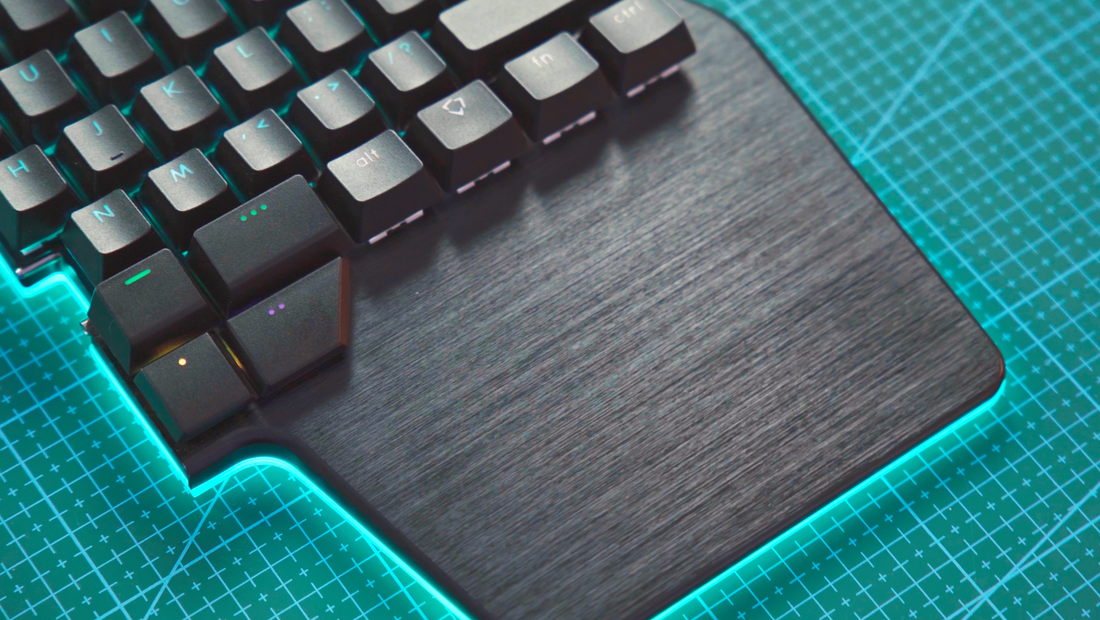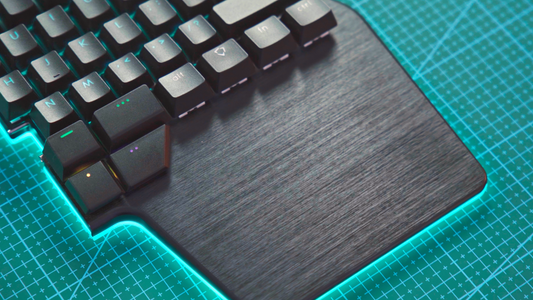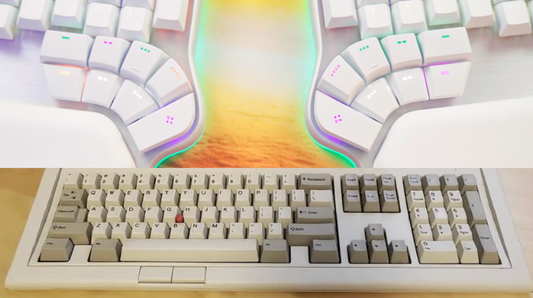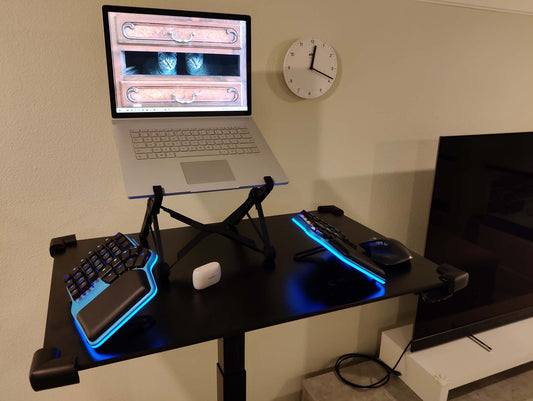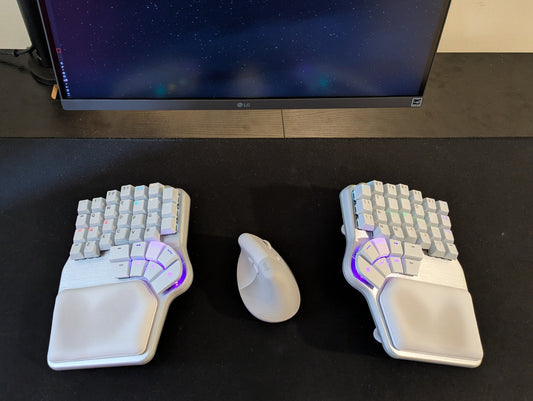I recently upgraded to an iPhone 17 Pro, and like any normal person, I’ve watched every review and YouTube video before making the call.
And even if you didn’t watch EVERY VIDEO, you’ve probably heard about Scratchgate — some people claim the iPhone 17 Pro scratches way too easily, especially around the camera bump.

Since we’ve been using anodized aluminum in our keyboards for years, we thought it would be interesting to explain how aluminum is anodized and the design decisions we took to avoid issues like the iPhone 17 Pro Scratchgate.
Why Is Aluminum Anodized?
Anodizing converts the surface of aluminum into a hard, corrosion-resistant layer of aluminum oxide, commonly referred to as alumina. Alumina is up to 9H on the Mohs scale of mineral hardness, close to sapphire.

Unlike paint or plating, the oxide layer grows from the metal itself. It becomes part of the surface rather than sitting on top—like armor made from itself.
And yet, we’ve all seen the scratches on the iPhone. Why?
That has to do with the anodizing process and the design of the piece being anodized.

How Is Aluminum Anodized?
Anodizing is the final step in the process of creating any aluminum component.
Our keyboards all start with a flat aluminum sheet that’s die-cut and stamped into the shape of the top panel.
Next, we die-cut the holes for the switches, add internal supports for the screws, and CNC the recesses for the low-profile switches, the battery, and the magnets for the palm pads.

Then, every edge is manually sanded to remove imperfections, and the entire piece is sandblasted to achieve a soft, matte texture.

Finally, we brush the top surface in one direction to get that distinctive Dygma finish.
Only then is it ready for anodizing.

The first anodizing step is a pre-treatment process that removes grease or oils from the surface. Basically, you wash the aluminum piece with an acid-based detergent.

Then, it’s rinsed to remove any excess detergent and proceeds to the next stage, which involves a caustic or acid etch that removes minor imperfections and creates a uniform surface ideal for anodizing.

Next, it’s rinsed again to remove any residue from the etch process.

Now, the aluminum piece is submerged in a tank of sulfuric acid electrolyte while an electric current is passed through the solution.

Oxygen ions are released to combine with the surface's aluminum atoms, creating aluminum oxide. Anodizing is basically a form of controlled oxidation.
We’re rusting it on purpose to create a material that is resistant to corrosion and harder.

This anodic coating grows both into the metal and outward, forming a fully integrated protection shell.
After anodization, the aluminum is rinsed again in deionized water.

Adding Color
Now is the moment to add color. The anodic coating is a porous structure. If you submerge the piece into a dye solution, the pores absorb the dye.
This is called Dye Coloring, the most common method for achieving any hue. The drawback is that it can fade slightly under UV light.

For our black keyboards, we use electrolytic coloring — instead of dye, we use an electric current to deposit metal salts inside the pores. That creates deep, rich tones that never fade. The longer the time, the darker and more intense the color.

Apple’s bright finishes like Cosmic Orange or Pacific Blue are almost certainly dye-based — because electrolytic coloring can’t produce vivid hues. We also use dye coloring for the limited edition colors of our keyboards, such as Royal Purple, Egyptian Gold, Atlantis Blue, or Daredevil Red.

The final step is sealing the porous surface using a solution of nickel-acetate, so the color is integral to the material. In this step, you can also achieve a glossy or matte finish.

What Caused the Scratchgate?
Okay, so now that we know how aluminum is anodized and how well it protects it, what caused the Scratchgate?
The answer lies in the design decisions. The camera bump has very sharp corners, which means there is less surface area for the oxide layer to grow evenly; as a result, the protective coating ends up thinner and more prone to chipping.
That’s where Apple’s design choices meet the limits of physics.

This is something that we purposely avoided when designing the top panel for our keyboards.
You’ll notice that the corners are rounded, and wherever there’s a sharp edge, another element protects it.

Even the holes for the switches are slightly chamfered to prevent scratches, and the sandblasting and brushing also help smooth out any sharp edges.
Of course, even a flat anodized surface like the top panel can be scratched: if you apply pressure with a sharp metal object like a key, you will scratch it.
But anodizing should protect it from normal pressure from sharp objects.
And also hard pressure from rounded objects like a coin.

That’s why we even modified the keycap and switch puller that we provide with the keyboard so its edges are rounded and less likely to scratch the surface if you’re not careful.
So it’s not just about the process — it’s about how you design for it.

And that’s why the iPhone’s camera bump scratches — not bad anodizing, just sharp edges.

If you liked our limited edition keyboards, check them out at dygma.com/colors.
